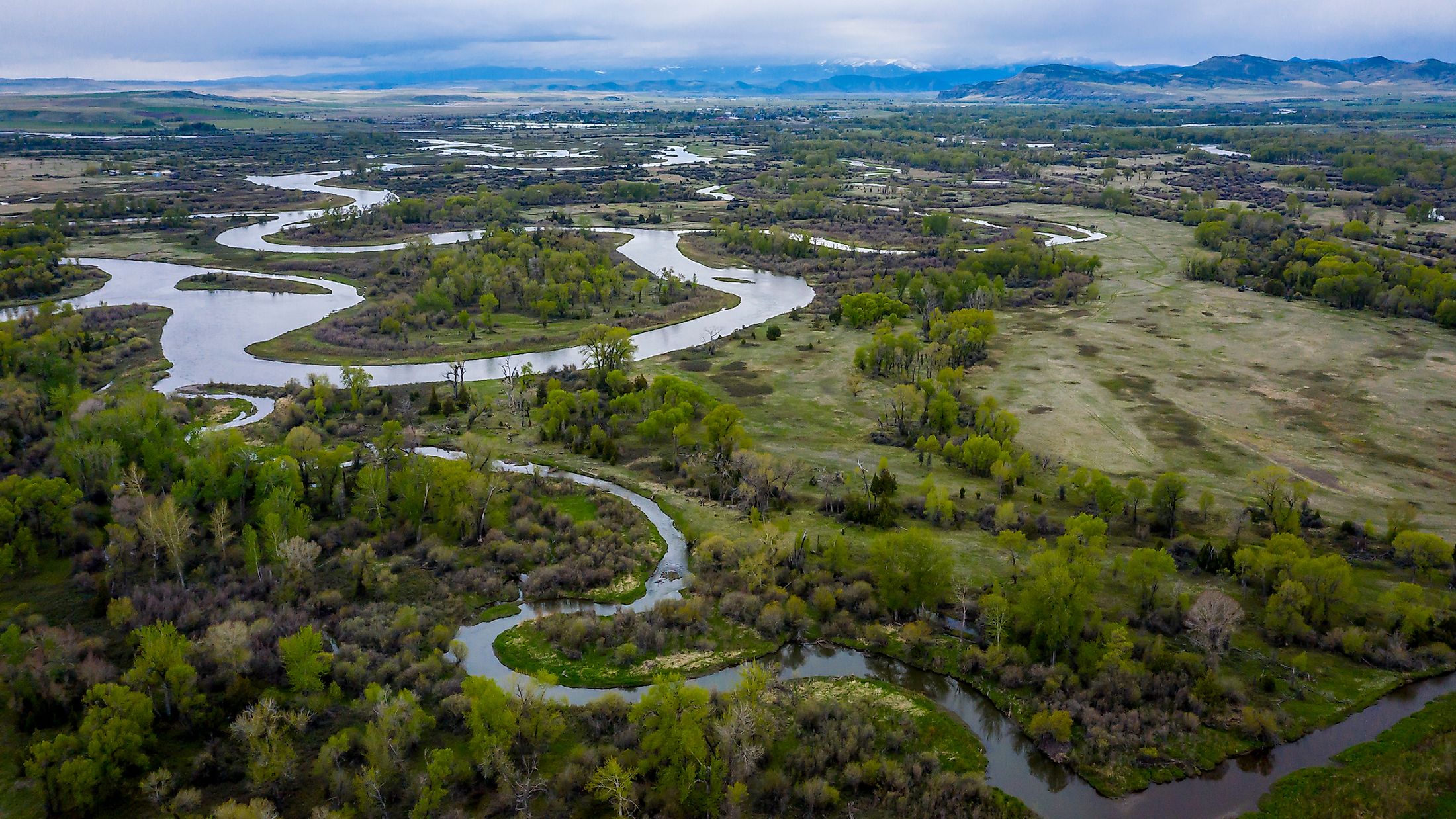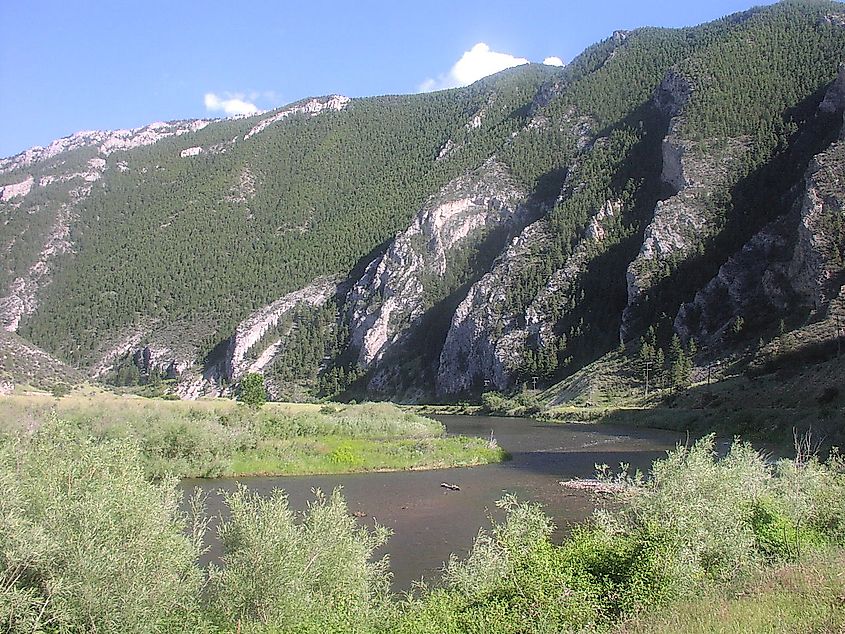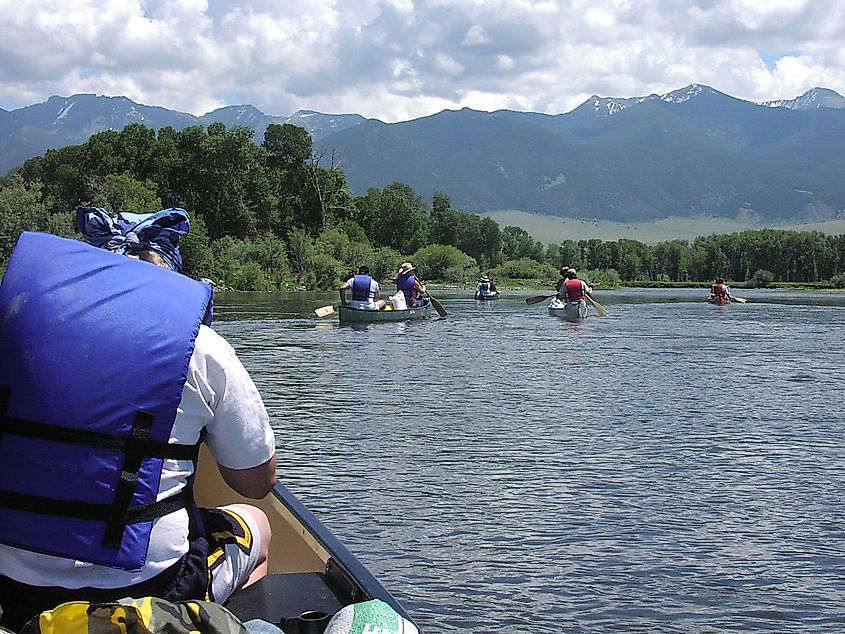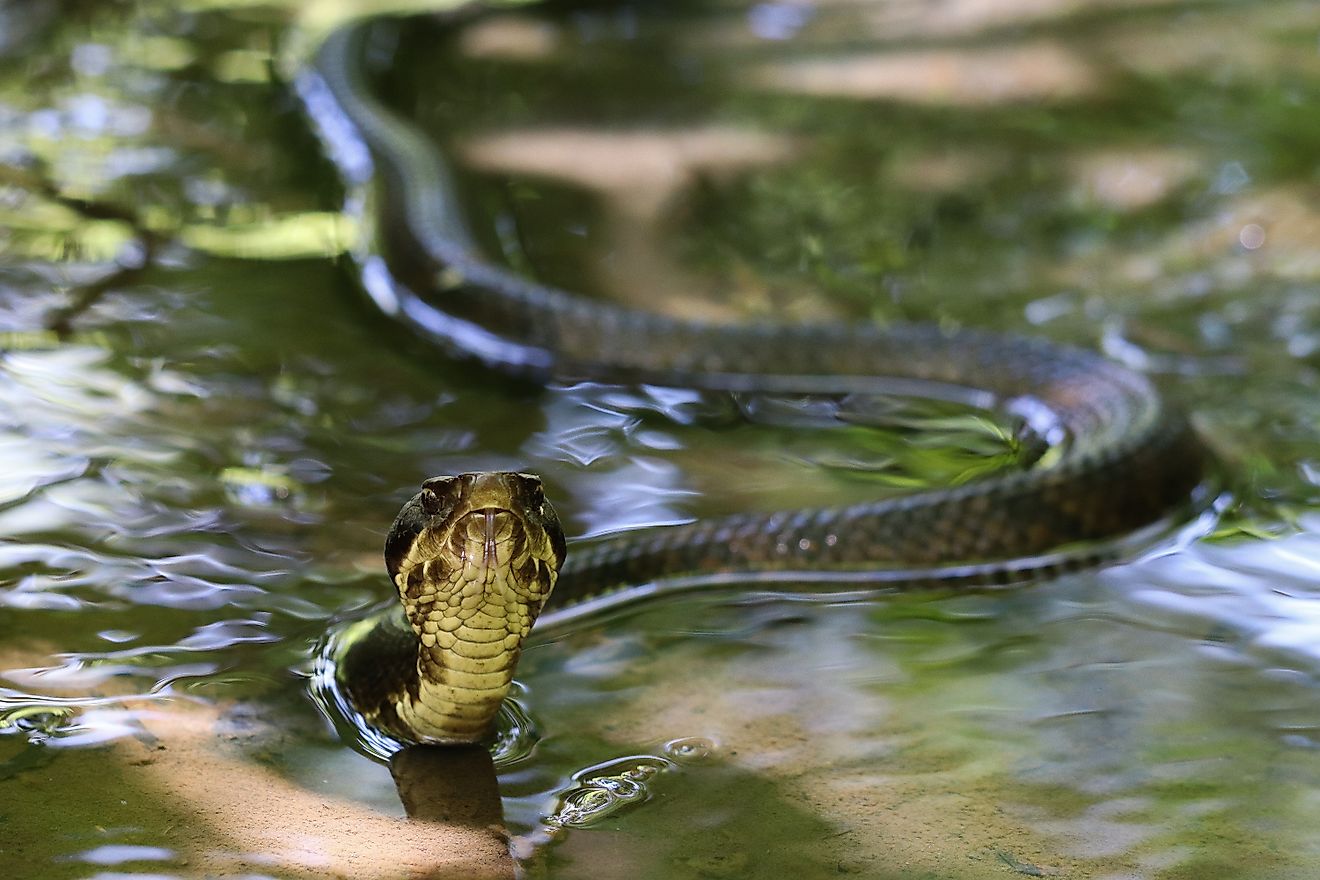
Jefferson River
Jefferson River is a waterway in Montana, United States, and one of the three headwaters of the Missouri River. The 134-km-long river rises in Southwestern Montana and joins the Gallatin and Madison Rivers at Three Fork, Montana, to form the Missouri River, which drains into the Mississippi River. The Mississippi River eventually empties into the Gulf of Mexico. The Jefferson-Missouri-Mississippi River System is the world’s 4th longest river system. Jefferson drains approximately 24,690 square kilometers of land and has a mean discharge of 54.6 cubic meters per second. Although excessive water use and developments are the major threats, the river still maintains its 19th-century wildlife diversity and scenic beauty. Jefferson River was named in honor of President Thomas Jefferson.
Course Of The Jefferson River

Jefferson River is formed by three small streams originating in the Gravelly Range in Southwestern Montana. The longest stream rises from the Brower’s Spring on the northern Centennial Mountains and flows as Hell Roaring Creek. It merges with the Rock Creek to form the Red Rock River. The Red Rock River flows west and northwest for about 110 kilometers through Lima and Clark Canyon Reservoir. It leaves the Clark Canyon Reservoir as Beaverhead River and flows through a valley for about 110 kilometers. It receives the Ruby River before joining the Big Hole River near Twin Bridges to form the Jefferson River.
Jefferson flows northwards to Whitehall through the Jefferson Valley. It turns east at Whitehall and receives the Boulder River near Cardwell. Then the river flows through a narrow canyon in the Lewis and Clark Caverns State Park. It emerges out of the canyon and flows into another valley in Willow Creek. After about 362 kilometers (134 kilometers as Jefferson River), Jefferson joins Gallatin and Madison Rivers at Three Forks to form the Missouri River. The Three Forks is located within the Missouri Headwaters State Park. Jefferson River is the shortest of the three headwaters of the Missouri River.
Jefferson River is divided into three sections: upper, middle, and lower Jefferson. The Upper Jefferson begins from the confluence of Beaverhead and Big Hole Rivers and flows for approximately 75 kilometers until it reaches near Cardwell. The Middle Jefferson flows for about 20 kilometers from Cardwell through a narrow canyon to Sappington Bridge. The Lower Jefferson flows from Sappington Bridge for about 40 kilometers to the confluence with the Madison River.
History
According to archaeological discovery, the first Americans may have settled on or near the Missouri River. The Clovis points, used by the Clovis people or Paleo-Indians over 10,000 years ago, were discovered on the Missouri River, about 75 kilometers from the Jefferson River. Earth ovens and cooking pits used by the first Americans have also been discovered from Barton Gulch, one of the branches of the Jefferson-Ruby river system. The Kalispel and Salish began settling along the Jefferson River in the 16th century. By the early 18th century, several other tribes had settled in Montana and the river basin, including Shoshone, Flathead, Blackfeet, Bannock, and Sioux.
Exploration And Naming Of The Jefferson River

Little was known about the Missouri River and its headwaters until the beginning of the 19th century. The Missouri River basin became a US territory in 1803 through the Louisiana Purchase. Shortly after, President Thomas Jefferson asked William Clark and Meriwether Lewis to lead a team of men in exploring the Missouri River. Lewis and Clark met Toussaint Charbonneau and his wife Sacagawea and hired them as part of the expedition. On July 27, 1805, the expedition team reached the Missouri headwaters and discovered three forks. They named the eastern fork Gallatin, the middle fork Madison, and the western branch Jefferson. After a few days of rest, the team sailed on the Jefferson River to the confluence of the three streams forming the main Jefferson River.











